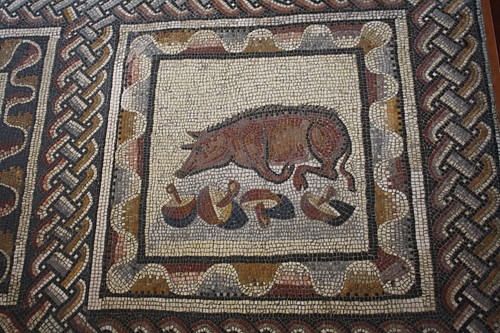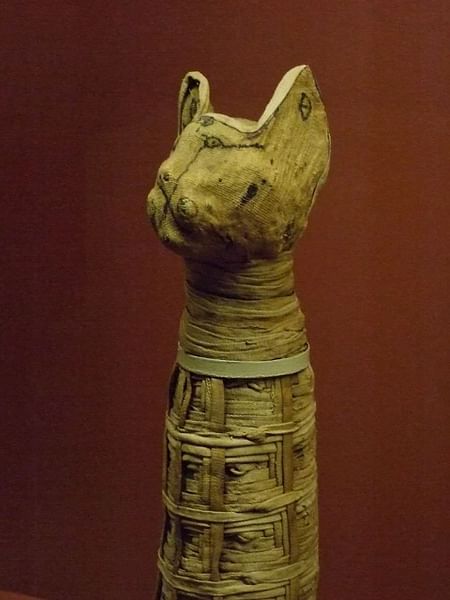According To Historians, What Was The First Farm Animal To Be Domesticated?
Brute husbandry is a branch of agriculture concerned with the domestication of, care for, and convenance of animals such as dogs, cattle, horses, sheep, goats, pigs, and other similar creatures. Beast husbandry began in the so-called Neolithic Revolution around x,000 years ago only may accept begun much before. It has been speculated that homo beings used fire to cook nutrient 1.5 million years ago, only the but archaeological testify obtained thus far sets the date of the use of fire for cooking at 12,500 years ago every bit indicated by the discovery of dirt cooking pots in East asia and Mesopotamia.
Domestication
Before long after this date, evidence of domesticated animal basic left over from homo social gatherings such as dinners emerges; said bones having been discovered in excavations of fire pits in ancient kitchens. Though domestication of animals was probably mutual earlier, information technology is sure that goats and sheep were domesticated throughout Asia by 8000 BCE. Wheat was domesticated and in wide use in Mesopotamia past 7700 BCE, goats by 7000 BCE, sheep by 6700 BCE, and pigs by 6500 BCE. By the time of the settlement of the commencement Mesopotamian city of Eridu in 5400 BCE, brute husbandry was widely adept and domesticated animals used in the workforce (such as in plowing), as pets, and every bit a food source. Horses were tamed by 4000 BCE and, in time, became an important component in warfare in drawing the great chariots of the various nation-states. Eventually, elephants, tigers, and lions were employed on the battlefield; particularly in the latter cases of the Persian campaigns, in Indian warfare in resistance to Alexander the Peachy, and, most famously, by during the Punic Wars by Hannibal of Carthage against the Romans.
The domestication of animals allowed for the edifice of permanent settlements.
Domestication of animals produced a dramatic change in the manner people lived. Civilizations which had relied on hunting and gathering as a means of subsistence at present congenital permanent settlements and engaged in a pastoral beingness relying on their cattle and crops. Once people realized that animals could be tamed, the creatures became incorporated into the most basic and widespread rituals of the civilization. Worship of animals in Egypt is well known (nearly notably their reverence for the cat who symbolized the goddess of the hearth and home, Bastet), merely many ancient cultures incorporated animal imagery into their religious icons and practices. Wildlife came to represent untamed forces in the universe (such as the lions of the goddess Inanna in Mesopotamia) while domesticated creatures symbolized condolement and security (for example, the dog in Greece and Rome). In India, according to the historian Durant,
There was no real gap betwixt animals and men; animals as well as men had souls and souls were perpetually passing from men into animals and back over again; all these species were woven into one infinite web of karma and reincarnation. The elephant, for example, became the god Ganesha, and was recognized as Shiva's son; he personified homo's animal nature and, at the same time, his prototype served equally a charm against evil fortune. (509)
The domesticated animals came to symbolize order as opposed to the chaos of the untamed earth.

Wild Boar, Roman Mosaic
Excavations of pass up dumps exterior of the towns and cities in the region of Mesopotamia prove a gradual decline in the number of wild gazelle bones afterwards 7000 BCE (which, it has been suggested, shows a depletion of wild game) while the number of domesticated sheep and goat basic grows in number after the same year. This same basic pattern has been adamant in China, India, and Egypt. Scholars have determined that these sheep and goats were domesticated, and not wild, based upon the condition of the bones and, of course, the writings and artwork of the cultures. It is thought likely that wild sheep and goats came to graze around human settlements in an attempt to escape from natural predators who would have avoided contact with humans. In fourth dimension, these animals grew increasingly tame and became an hands accessible source of food. This same process of the gradual taming of a wild animal by shut association with human beings is too thought to accept been the means past which dogs were domesticated and, initially, cats as well.
Cats & Dogs
Fauna husbandry reached its height, in the ancient world, in Egypt where cats and dogs were cared for equally though they were role of the human being family in which they lived. Mummies of cats and dogs have been discovered in tombs in Egypt and then deeply did the Egyptians feel for their cats, Herodotus tells u.s.a., that they would shave their eyebrows and form a funeral procession of mourning upon the death of ane of these pets. A more dramatic illustration of the importance of cats, especially, but of other animals besides, is the famous Battle of Pelusium in 525 BCE in which Cambyses II of Persia defeated the forces of Arab republic of egypt by having his soldiers paint the image of the bang-up cat goddess Bastet on their shields and, further, by driving the animals loved by the Egyptians earlier their front end lines. The Egyptians, agape of offending their gods by hurting the animals, surrendered their position and fled in a rout, during which virtually were massacred. In this way, Cambyses II of Persia conquered Egypt and was so contemptuous of the Egyptians for preferring the rubber of animals to their own freedom that he hurled cats into the faces of the Egyptians during his triumphal march afterwards the battle.

Cat Mummy
Recent studies suggest that animate being husbandry may take begun in Europe, rather than Asia or the Most East, through the domestication of "dog-similar creatures" in the region now known equally Germany. These studies, however, fail to take into account the bear witness from the earlier regions and seem focused solely on domestication of wolves or, more vaguely, a non-wolf canine which was not directly related to the dog. Evidence of widespread domestication in Mesopotamia, China, and Republic of india, however, argues for those regions as among the first to practice brute husbandry with Europe following the practice subsequently. However it start began, the care for and breeding of animals continued on, of grade, and is still an important role of every culture in the globe in the present day.
This article has been reviewed for accuracy, reliability and adherence to academic standards prior to publication.
Source: https://www.worldhistory.org/Animal_Husbandry/
Posted by: fossutall1944.blogspot.com

0 Response to "According To Historians, What Was The First Farm Animal To Be Domesticated?"
Post a Comment